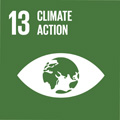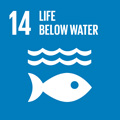- Docente: Andrea Luchetti
- Credits: 6
- SSD: BIO/05
- Language: Italian
- Teaching Mode: In-person learning (entirely or partially)
- Campus: Bologna
- Corso: Second cycle degree programme (LM) in Sciences and Management of Nature (cod. 9257)
Learning outcomes
The aim of this course is to impart knowledge about animal diversity and biogeography linked to climate changes. In historical ages, in fact, animal natural distribution, as a product of evolution, has been often confused from anthropic activities. Climate changes, though, is currently boosting the process with an impact deeper than ever on animal diversity. Ranges of distribution can be either reduced or widened, promoting biodiversity loss/extinction or leading to new species relationships. Therefore, ecological equilibria can be severely modified, also because of the phenomenon – among others – of alien (invasive) species. Through the course - also based on current literature and online resources analyses – students will acquire the ability to discuss case studies of animal distribution following climate changes, to explain habitat dynamics (loss in biodiversity and alien species) and analyze methods for animal resources conservation halting biodiversity loss.
Course contents
Principles of animal diversity and distribution. Zoogeographical regions and biomes. Niches and distribution ranges. Factors affecting the animal distribution. Palaeogeography and tectonic events: palaeoclimatology and past major climatic events. Evolutionary factors: speciations and extinctions; dipersal and migrations. The insular biogeography. Anthropic factors affecting animal diversity and distribution. Invasive and alien species (IAS). Methods for the study of animal biodiversity and distribution.
Readings/Bibliography
There are not specific books. Didactic materials (slides, scientific papers, etc.) will be provided by the teacher.
Teaching methods
Theoretical lessons and practical exercise with computers.
Assessment methods
The exam at the end of the course aims to evaluate the following didactic targets:
Knowledge and understanding of biogeographical patterns;
Ability to recognize and understand factors that can modify the diversity and distribution of animal species/populations;
Understanding of invasion dynamics of IAS
Understanding of the role played by anthropic activities with respect to the variations of diversity and distribution of animal species/populations;
The final score will be assessed through a written test and an oral examinationTeaching tools
Theoretical lessons, with power point presentations and practical exercises with computers.
All slides, files, tutorials and other material used during the course will be provided to students
Office hours
See the website of Andrea Luchetti
SDGs



This teaching activity contributes to the achievement of the Sustainable Development Goals of the UN 2030 Agenda.
